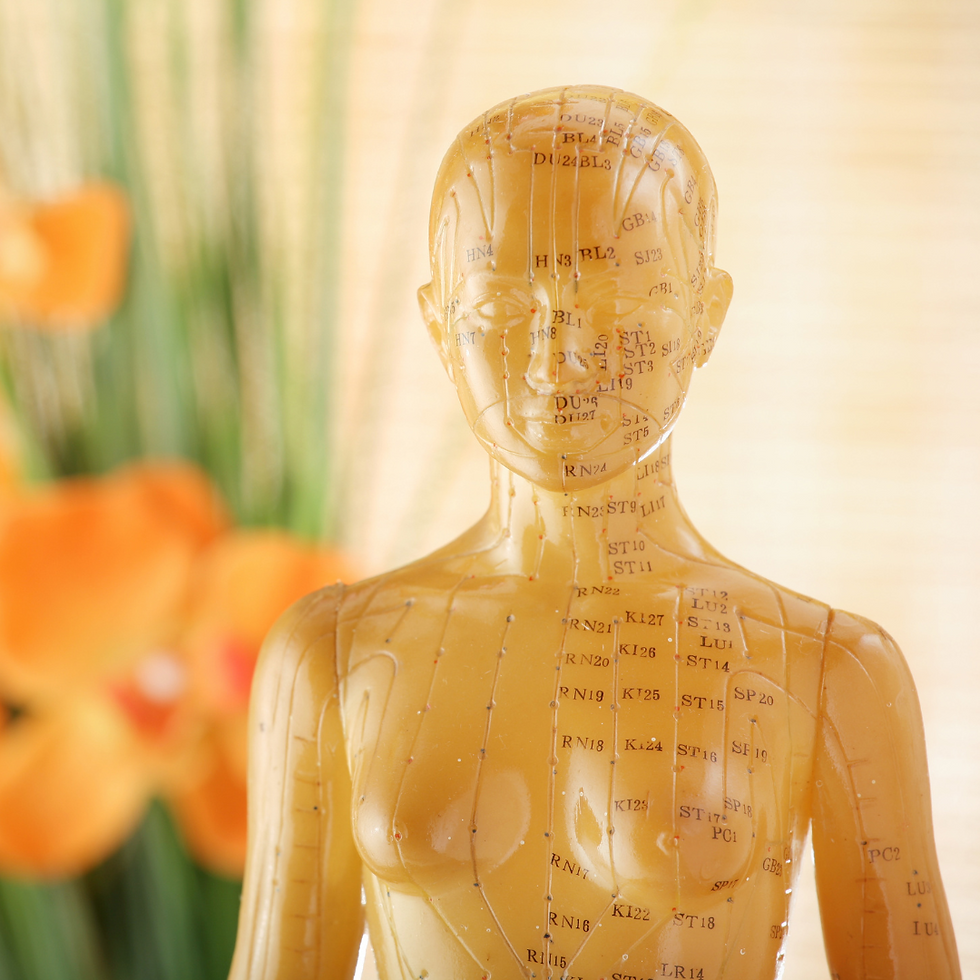San Antonio Acupuncturist Explains: Acupuncture vs. Dry Needling — What's the Difference and Why It Matters
- Dr. Turner-Parker

- Jul 22
- 3 min read

If you've been exploring options for pain relief, muscle recovery, or holistic wellness, you’ve probably come across two needle-based therapies: acupuncture and dry needling. While they may look similar at first glance - both use thin, sterile needles inserted into the body, but their philosophies, techniques, and safety standards are very different.
San Antonio- based acupuncturist and integrative specialist, Dr. Turner-Parker, breaks down the differences between acupuncture vs. dry needling this article.
What Is Acupuncture?
Acupuncture is a key component of East Asian Medicine, practiced for thousands of years. It’s based on the concept of qi (vital energy) flowing through the body along specific pathways called meridians. When this flow becomes blocked or unbalanced, physical and emotional symptoms can arise.
An acupuncturist uses ultra-fine needles to gently stimulate specific acupuncture points to:
Regulate the nervous system
Promote circulation
Alleviate pain
Support digestion, sleep, immunity, and more
Restore balance between yin and yang
Acupuncturists are trained to see the whole person, addressing both symptoms and their root causes. Sessions often include lifestyle guidance, herbal medicine, gua sha, cupping, or dietary recommendations to support long-term healing.
What Is Dry Needling?

Dry needling is a more recent technique that focuses solely on myofascial trigger points - tight bands or "knots" in muscle tissue. The goal is to release tension, improve mobility, and decrease pain, particularly in localized areas.
Dry needling does not follow Traditional Chinese Medicine principles. It does not consider the body’s energetic systems or overall pattern differentiation. Instead, it is used more like a manual therapy technique aimed at muscle motor points and dysfunctional tissue.
It’s also important to know that dry needling can be more painful than acupuncture, often producing a twitch response or soreness after treatment.
A Note on Training & Safety in Texas
In the state of Texas, licensed acupuncturists complete over 3,000 hours of education, including needle technique, anatomy, physiology, safety, and supervised clinical practice. We are also board-certified by the NCCAOM and adhere to Clean Needle Technique (CNT) protocols.
By contrast, physical therapists and chiropractors are not required to have a minimum number of hours of training to perform dry needling in Texas. Some practitioners receive as little as 20–40 hours of weekend instruction, with no national board exam or clinical internship requirement.
This raises important safety concerns, especially when dry needling is performed in sensitive areas like the neck, chest, or near the lungs. If needles are inserted too deeply or without proper anatomical understanding, complications such as pneumothorax (collapsed lung) can occur.
Acupuncture vs. Dry Needling: Are They The Same Thing?
The simple answer is no. Although the tool is the same, the approach, training, and intention are very different.
In fact, many San Antonio acupuncturists (myself included) are trained in dry needling techniques, but we incorporate them into a broader, safer, and more holistic treatment framework. In acupuncture clinics, dry needling is just one tool among many, not the whole toolbox.
Why Choose Acupuncture?

If you're seeking a comprehensive approach to healing that treats more than just the muscle, acupuncture is a time-tested and evidence-supported option. Whether you’re dealing with chronic pain, stress, hormonal imbalance, or digestive issues, acupuncture offers a gentle yet powerful path to long-term wellness.
Final Thoughts
Dry needling has its place, particularly in sports rehab and physical therapy, but it’s crucial to know the qualifications of the person holding the needle. Ask questions, do your research, and if you're unsure, consider seeing a licensed acupuncturist in San Antonio who can offer both traditional and muscle-based techniques in a safe, integrated, and balanced way.
Curious how acupuncture can help you feel better from the inside out?




Comments